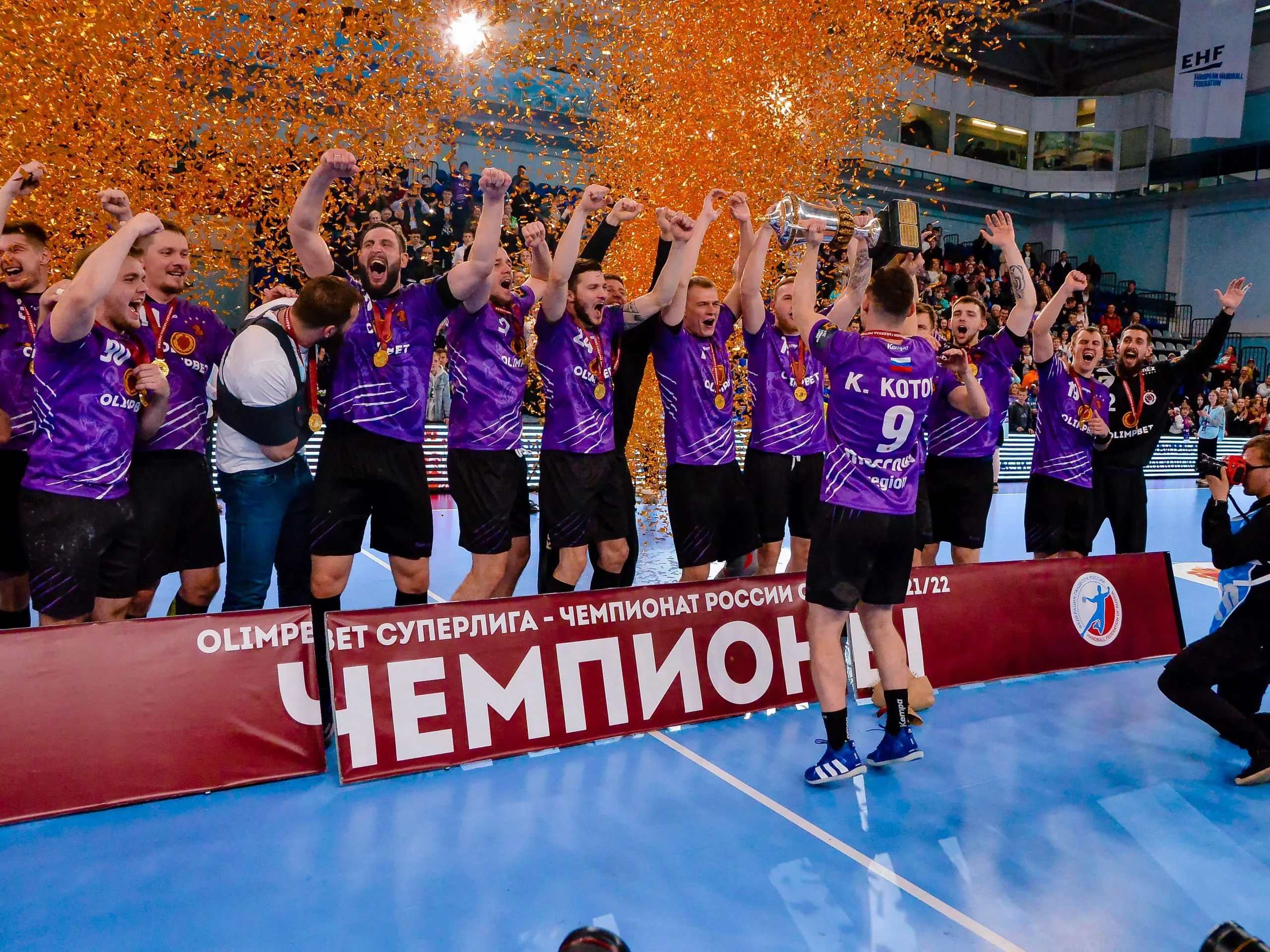Handball is not just a sport. It is a symbiosis of strategy, endurance, and lightning-fast interaction. The essence of handball lies in swift attacks, continuous movement, and the ability to create dangerous moments in a limited space of the court. Every pass, every throw requires precision, and any mistake can cost victory. The format is adapted to different levels of preparation and age, from youth competitions to major international tournaments.
Structure of Handball Game: Essence, Tempo, Rhythm, Control
The duration of a match in the classic format is strictly regulated. The game consists of two halves of 30 minutes each, with a 10-minute break between them. If necessary (e.g., in playoffs or final stages), referees can appoint additional time — two extra halves of 5 minutes each. In case of a draw after extra time, a series of penalty throws is provided.
The essence of handball in this block is manifested in the ability to control the ball, set the rhythm, and adapt to the opponent. The tempo constantly changes: fast breaks are followed by positional attacks, and endurance becomes a decisive factor. Referees monitor passive play, forcing teams to adopt an active tactic. On average, a professional team executes 50–70 attacks per match, requiring thoughtful player rotations and well-coordinated interaction among all lines.
Composition of a Handball Team
A handball team consists of 14 players, including two goalkeepers. Seven players act on the court simultaneously: six field players and one goalkeeper. Each participant performs a clearly defined function.
The distribution of roles includes:
- Goalkeeper — the main defender of the goal, using not only reaction but also smart positioning.
- Line player — operating in the six-meter zone, engaging in physical battles with the defense.
- Back players — organizing plays and shots from 9 meters.
- Wingers — attacking from the flanks at acute angles.
- Playmaker — the conductor of the attack, controlling the tempo and passes.
Understanding the essence of handball is impossible without realizing the importance of each position: defense is built on containment, while the attack relies on play variety. Substitute players are allowed to be replaced an unlimited number of times, enabling the coach to react promptly to changes in the match.
Rules and Specifics of the Court: Essence of Handball Game
The field has clear parameters — 40×20 meters, divided by a centerline. The goalkeeper’s area is limited by a six-meter arc, which field players cannot enter. The goalkeeper is allowed to use any part of the body to deflect the ball, unlike field players who are only allowed to touch the ball with their hands above the knee.
The ball has strict standard divisions based on age and gender:
- Women’s — circumference 54–56 cm, weight up to 400 g.
- Men’s — 58–60 cm, weight up to 475 g.
- Youth — up to 52 cm, weight up to 375 g.
The essence of handball in this context is revealed in the logic of restrictions — rule violations result in a yellow card, a 2-minute suspension, or disqualification. Penalties apply not only to fouls but also to time delays, incorrect substitutions, and simulations.
Tactics and Strategies
Key element — interaction. Teams use dozens of combinations, among which the following dominate:
- crosses — cross movements of playmakers to create free zones;
- double walls — quick passes with an immediate shot opportunity;
- wing entries — attacking through the sides while diverting attention from the central zone;
- squeeze-and-grab — tactical pressure on one defender to create a numerical advantage.
The essence of handball becomes clear through these schemes: teams act like chess players under time constraints. For example, Porto, one of the flagships of Portuguese handball, uses a 5-1 scheme with aggressive pressing and double substitutions in the midfield. This allows the team to maintain intensity throughout all 60 minutes.
Equipment and Training Focus
For a full game, athletes use lightweight shoes with cushioning, reinforced elbow pads, and thermoforming jerseys. Goalkeepers wear protective shorts and cuffs. Training focuses on coordination, explosive strength, and endurance. The training process also includes sessions on beach courts, where balance and stability are developed.
The essence of handball in warm-ups revolves around cyclicality: alternating speed segments, passing drills, shots under pressure, pair work, and 3×3 mini-games. Special attention is paid to positioning, covering, and reading the opponent’s movements.
Handball in the Digital Era: Essence of the Game, Statistics, and Analysis
Modern analysis platforms — Hudl, Dartfish, and Longomatch — allow coaches to track key indicators: pass accuracy, average speed of movement, number of interceptions, and shot efficiency.
The essence of handball is increasingly integrated with metrics: top clubs conduct video breakdowns of matches, dividing the process into episodes by seconds. Players receive individual reports after each match. This enhances discipline, develops self-control, and fosters systematic thinking.
Formula for Success — Dynamics, Intelligence, Interaction
Discipline requires full engagement — tactical, physical, intellectual. The essence of handball is not just about scoring more goals but surpassing the opponent in speed of thought and quality of coordination. Successful teams, whether from Portugal, Germany, or Scandinavia, prove that flexibility in decisions, understanding of rhythm, and unity determine the outcome of the match. The game equalizes height and weight, age and experience — but rewards those who play faster, more accurately, and smarter.
 en
en  ru
ru  de
de  ar
ar  es
es  nl
nl  hi
hi  fr
fr  it
it  pt
pt  el
el 










